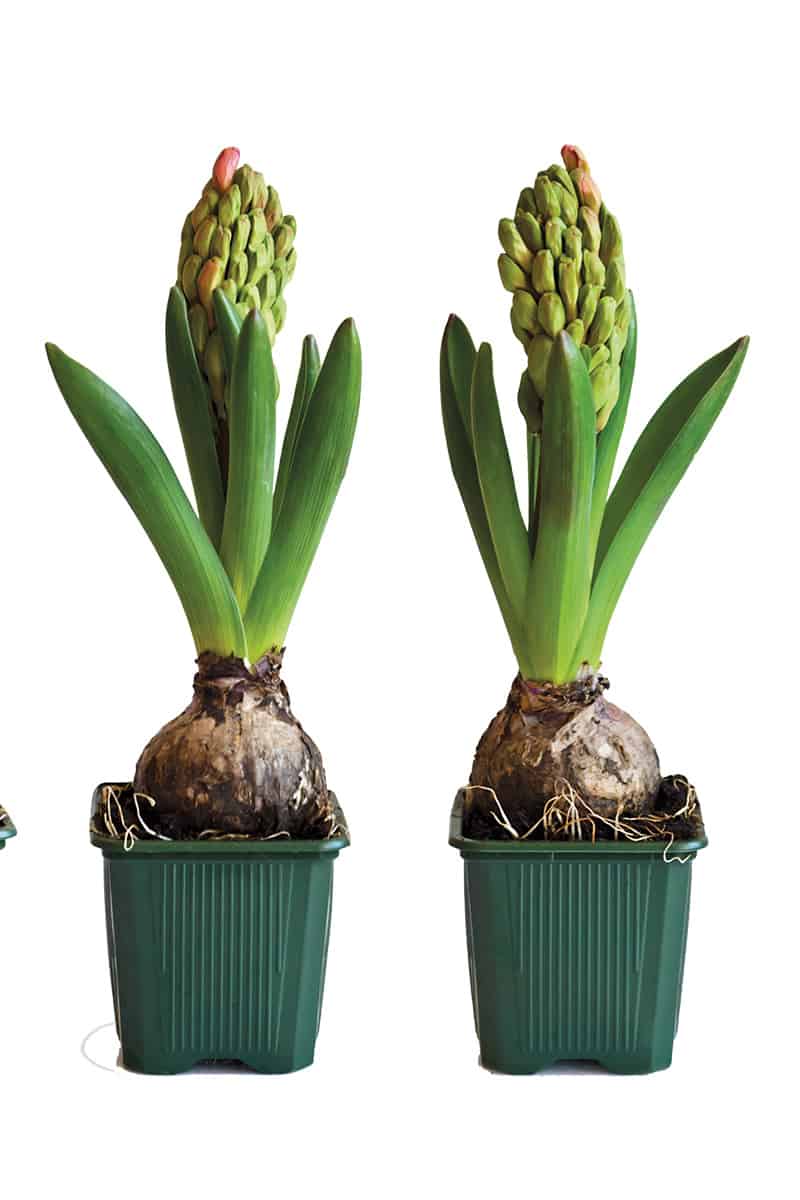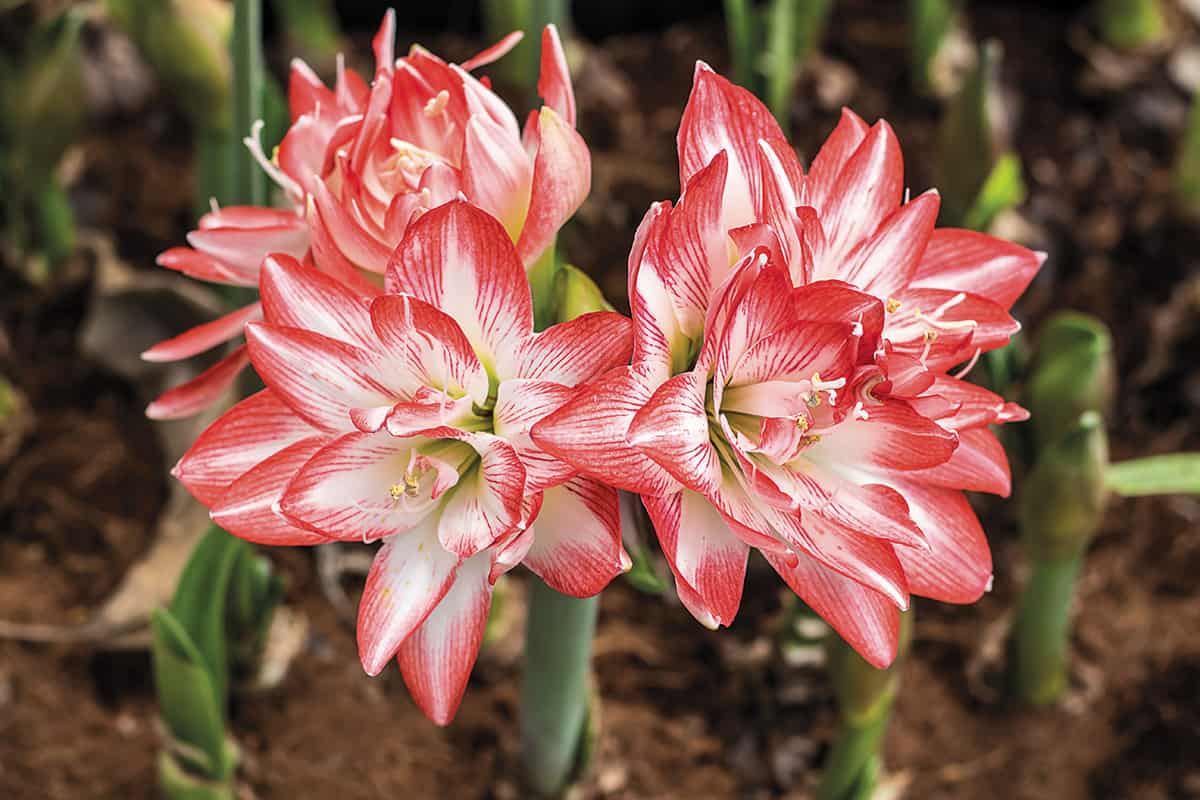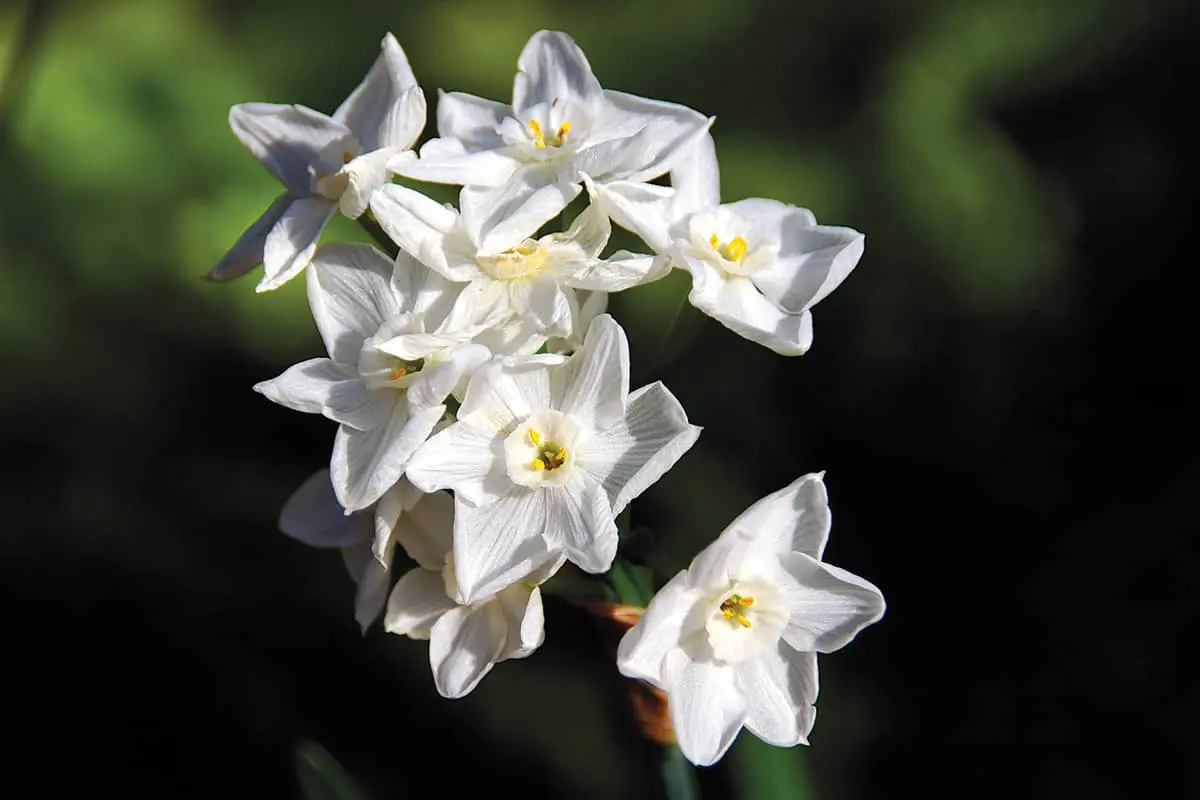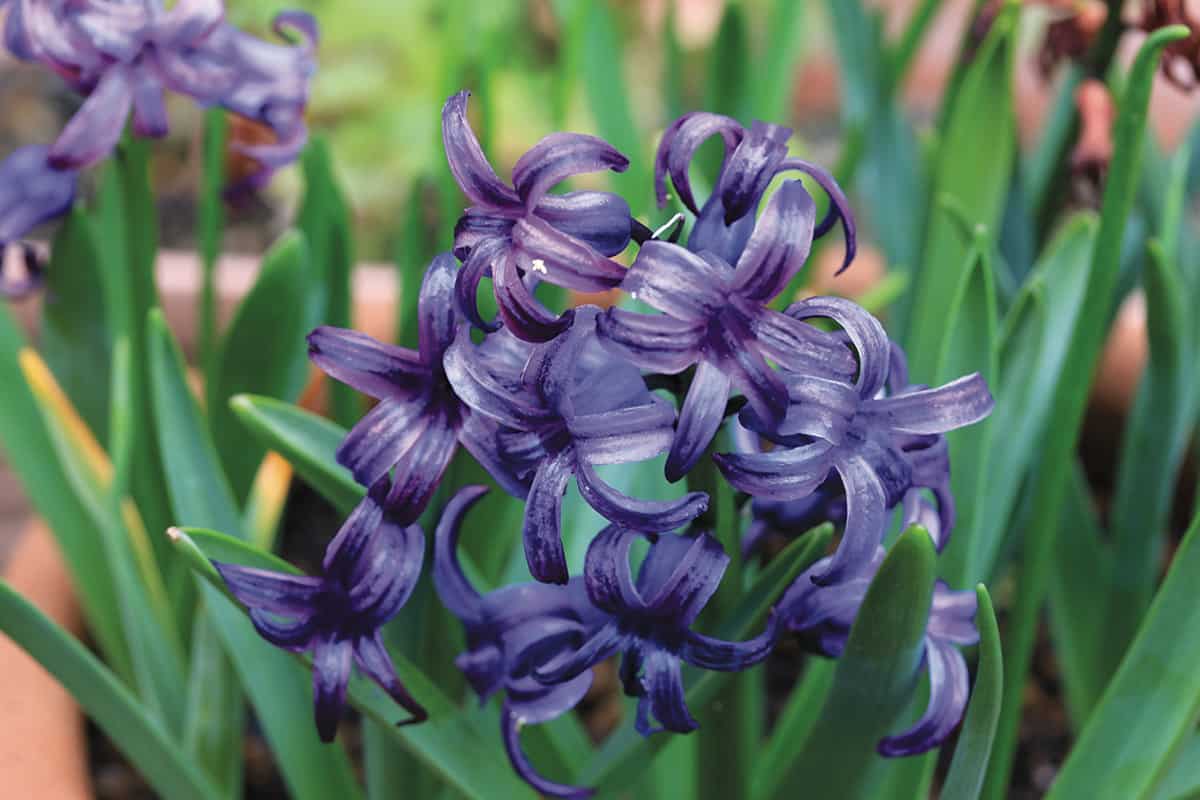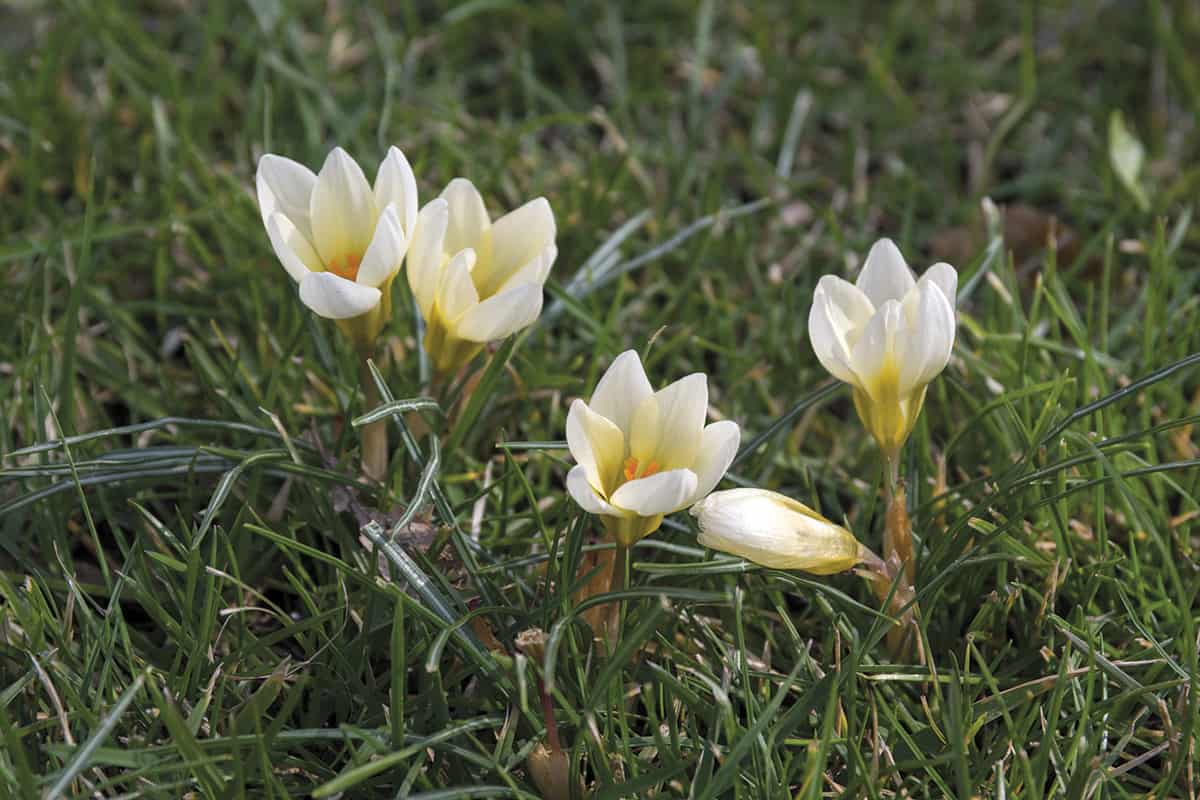By Judy Allen
–
As an ardent gardener, I meet fall with mixed feelings. While I am ready to relinquish the tough work of gardening, I miss the marvel of watching things grow. I love our Rocky Mountain winter—both its blizzards and bluebird days. But by March, when dirty snow piles linger into dreary days, I’m longing for the green foliage and colorful blossoms of spring.
Short of a tropical vacation, the next best way I’ve found to get an early dose of spring is to plant, in the fall, pots of bulbs for indoor bloom from December through April. The horticultural term for this process is called “forcing,” but I prefer to think of it more gently, like “coaxing” or “encouraging” a willing species to bring forth its flowers for my admiration, just a little early.
Bulb Selection
The bulbs I’ve been most successful with include those grown only in winter, as well as those grown in warmer climes for outdoor spring displays, such as South African native amaryllis, a Christmas classic, and paperwhite narcissus, a not-so-hardy species of daffodil. Recall the Greek myth of handsome Narcissus, who fell in love with his own reflection in the pond. When he died, daffodils sprang up where he had lain. Paperwhite blooms are just as gorgeous, and fragrant, too. Other bulbs I “coax” are crocus, hyacinth, iris, and tulips. While hyacinth blooms only in warmer zones, the other three grow here outdoors. But crocuses and tulips—especially the latter—are relished by rodents, so indoor pots ensure a showing.
Amaryllis and paperwhites are easiest for beginners, as they require no winter chill and will grow their full cycle in your home. More experienced growers may seek the challenge of crocus, hyacinth, iris, or tulips. These require a cold period to simulate a winter spent outside. You will need to find a spot to overwinter these pots for a specific length of time (see chart on page 22).
Purchase bulbs at local nurseries or through online catalogs, which often offer a broad selection. For winter-chill bulbs, look at packaging or catalog descriptions for the species of each deemed suitable for forcing. My preferred choices are listed in the chart. Order early while selection is good, and hold your bulbs indoors until it’s time to pot them up.
A Winter Home
Choose colorful, unique, and/or sentimental containers to complement your vibrant flowers. Be sure your pots have drainage holes, with a saucer underneath to catch watering overflow. (Paperwhites are the exception; they thrive without drainage in soil or pebbles—recall Narcissus at the pond—so you can get creative and use a glass or galvanized container.) Since bulbs store all the food necessary to bloom, they are not particular about soil. Any well-drained potting mix will do.
After the outdoor garden is put to bed, around the middle to the end of October, I pot up my bulbs. I usually pot amaryllis individually, while grouping paperwhites and others. To plant amaryllis and paperwhites, cover them with soil up to the shoulder (the widest part of the bulb). Water until soil is soaked.
To plant crocus, hyacinth, iris, and tulips: position the bulbs, nearly touching, around the soil surface for a dense display. Push into the soil until tops are just covered. (Hint: use gloves when handling hyacinth bulbs, as they can cause skin irritation.) Water thoroughly after planting, letting the soil absorb moisture until it is evenly soaked. Label each pot to help you remember what to bring out when.
South African amaryllis benefit from some warmth. Keep them in a sunny window or on a shelf above a heater in full light. Paperwhites prefer cooler temps and indirect light.
Timing Isn’t Everything
For bulbs requiring a chill, determine where to overwinter your pots. This entails putting pots in a cool place for a specific number of weeks, mimicking time spent underground in an outdoor planting. I land my potted bulbs in my root cellar, where temperatures remain close to freezing. One gardener I know puts his pots on the bottom shelf of his refrigerator.
I’ve even heard of avid bulb forcers who dedicate a fridge in the garage exclusively to potted bulbs. Be wary of using a crawl space—it’s often too warm and may attract critters that’ll relish a meal of your delectable roots.
A protected shelf in the garage might be a better solution.
Begin the countdown when you rest your pots in their overwintering home. I record this on my calendar, bringing them out in a succession from the end of January to the end of March. Note the chilling period for each bulb on the “Chill Chart” and keep an eye on soil moisture, watering occasionally as needed.
When hibernation is done, bring each pot first into low light until shoots appear. Hyacinth especially needs to be shielded from bright light until the blossoms clear the foliage, to prevent too early of a bloom. Then locate pots where they’ll receive ample light, watering as they dry out. During bloom, be sure to keep pots well watered to avoid early wilt.
This winter, your barren pots will greet you with an explosion of green shoots and a rainbow of blooms. My favorites are the tiniest: my grandmother’s Delft pottery cradling nests of yellow crocus, a miniature harbinger of the glorious spring yet to come.
reblooming amaryllis
Dedicated gardeners only!
—
While most potted bulbs are reluctant to rebloom the following year, it is possible to convince your amaryllis to do so. Once the blossom has faded, cut the flower stalk at its base. Allow the huge, sword-like leaves to grow, watering as soil dries out. Water monthly with a fertilizer solution for blooms. Come late summer, give your plant a dormant period by placing it in a dark closet. Withhold water and allow the leaves to die back. Continue for three months. (For ease of recall, I put my pot in the closet on Labor Day and bring it out on Thanksgiving.) Then return the pot to a warm spot and resume watering. My Christmas amaryllis has bloomed annually for a decade, producing multiple flower stalks to greet the new year.
Chill Chart
Amaryllis
Recommended Species: Any
Chill Period: None
Paperwhites
Recommended Species: Nir and Ziva
Chill Period: None
Hyacinth
Recommended Species: Delft Blue
Chill Period: 12 weeks
Crocus
Recommended Species: Cream Beauty
Chill Period: 16 weeks
Iris
Recommended Species: Harmony
Chill Period: 16 weeks
Tulips
Recommended Species: Single Early
Chill Period: 14-20 weeks

